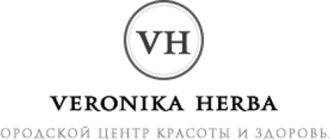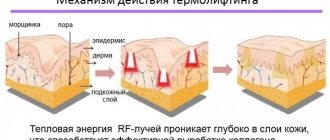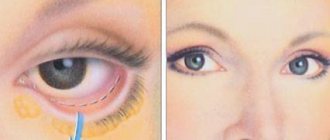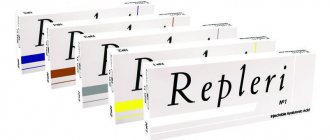Lecithin as a dietary supplement is effective for removing “bad” cholesterol, preventing the formation of blood clots, and normalizing the functioning of the gastrointestinal tract. There are also studies where lecithin derivatives were effective in treating liver damage. It is believed that products with lecithin improve brain function. In cosmetics, lecithin is used in skin and hair care products.
What is lecithin
Lecithin was isolated from egg yolk in the 19th century and its main properties are familiar to any housewife who uses eggs in cooking to mix unmixed ingredients, create creams and sauces. This is a property. That is, many beneficial properties are determined by its ability to liquefy and mix substances and maintain the resulting emulsion form (stabilization).
Lecithin is a mixture of phospholipids with triglycerides. Phospholipids and lecithin are often used interchangeably.
Lecithin is found in human tissues; it is part of the structure of cell membranes. More than half of the human liver consists of phospholipids. The brain and nervous system to a large extent too.
In nature, it is found in many products: chicken eggs, soybeans, sunflower seeds, beans, fatty fish. In dietary supplements and cosmetics, lecithin synthesized from soy is most often used, and lecithin from sunflower seeds is considered more expensive and useful. There are also options made from egg yolk.
Lecithin is used in the food industry as an emulsifier E322. In cosmetics in creams, serums, masks
The image shows a photo from a review of sunflower seeds.
In dietary supplements, lecithin is usually sold in the form of large translucent glycerin capsules or in liquid form. For the food industry, lecithin is produced in the form of granules or powder.
Chemical structure and properties of phospholipids
From a chemical point of view, phospholipids are esters of polyhydric alcohols and higher fatty acids, which contain a phosphoric acid residue and an additional group of atoms of various chemical nature connected to it, for example, choline in the case of phosphatidylcholine or ethanolamine in the case of phosphatidylethanolamine. Depending on which polyhydric alcohol underlies the structure of the phospholipid, glycerophospholipids (based on glycerol), phosphosphingolipids (based on sphingosine) and phosphoinositides (based on inositol) are distinguished. The most common glycerophospholipids in nature are phosphatidylcholine (Fig. 1), which is the main lipid of cell membranes.
Figure 1. Chemical formula and molecular model of phosphatidylcholine
All glycerophospholipids are built according to a single plan, and their molecules are sterically consistent with each other. At the same time, the huge diversity of phospholipids is provided by the variety of fatty acids that make up their molecules. Thus, there are several dozen natural types of phosphatidylcholine (Fig. 2).
Figure 2. Amphiphilic structure of the phospholipid molecule
Due to their chemical structure, phospholipids are amphiphilic molecules. The polar “head” consists of glycerol (or other polyhydric alcohol), a negatively charged phosphoric acid residue and a group of atoms attached to it, often carrying a positive charge. Nonpolar tails are fatty acid residues attached to a polyhydric alcohol by ester bonds (Figure 2). In the case of lysophospholipids (monoacyl phospholipids), only one fatty acid is attached to the glycerol residue, in this case the phospholipid molecule has a cone shape and can form micelles in an aqueous solution (Fig. 3). If the formation of an ester bond occurs along the two hydroxyl groups of glycerol, a diacylphospholipid is formed containing the residues of two fatty acid molecules. The diacylphospholipid molecule has the shape of a cylinder and in an aqueous solution forms lamellar bilayers in which the hydrophobic tails are oriented inside the layer, and the hydrophilic heads are oriented outside (Fig. 3). Thanks to this property, phospholipids are able to form biological membranes (lipid bilayer), liposomes and lamellar emulsions. In these emulsions, phospholipids form bilayers that surround and stabilize the oil droplets. This structure allows you to increase the amount of oils and other lipids in the emulsion, reduce the concentration of other emulsifiers, and the presence of an aqueous phase allows you to include water-soluble biologically active substances in the products.
Figure 3
Phospholipids are essential substances that are indispensable for humans. They are not produced in sufficient quantities in the body and must be obtained from food. Their most important function is direct participation in the construction of cell membranes. According to recent studies, most people do not receive up to 40% of the required phospholipids. The content of phospholipids in edible oils is relatively low and rarely exceeds 2%; the highest content can be noted in soybean, sunflower oils and cottonseed oil - 1.7–1.8%.
Being essential components of the biological membranes of all living cells, phospholipids are non-toxic and very well accepted by the skin.
Benefits of lecithin
Below we will talk about the beneficial properties of both lecithin in general and products containing it.
However, do not forget that when it comes to health, only a qualified doctor who is familiar with your condition and familiar with the list of medications you are taking can prescribe courses of nutritional supplements. No information on the Internet can replace professional consultation with a doctor, and our article on hvastik.com does not pretend to be so. Use the information below for reflection, to communicate with your doctor, but not as a guide to action.
In addition, there is an opinion about the uselessness of lecithin, more on this later in the article.
Lecithin for the brain
Lecithin is necessary for the production of a neurotransmitter necessary for good functioning of the nervous system and memory functioning. With a deficiency of lecithin, the nervous system may experience disorders such as increased irritability, cognitive disorders, increased fatigue and tiredness.
In more detail, for specialists, you can read about the effect of phospholipids on the functioning of the central nervous system, for example,.
There are a number of studies showing the benefits of using lecithin in the treatment of dementia, multiple sclerosis, and cerebral infarctions.
Lecithin for the vascular system
In the case of blood vessels, lecithin is useful because it “thins” the blood, which reduces the risk of blood clots. Blood circulation also improves, which generally improves the condition of patients with atherosclerosis.
In addition, lecithin is actively involved in the breakdown of fats, which is also very useful for diseases of the cardiovascular system.
When the body is supported by lecithin (from the central nervous system), exercise tolerance increases, the patient gets less tired and is able to move more actively, which in turn improves blood circulation.
Lecithin and “bad” cholesterol
Phospholipids increase the rate of synthesis of “good” cholesterol High Density Lipoproteins, which transport cholesterol from the cells of our entire body to the liver for subsequent removal. Some tests showed that lecithin reduced the level of total cholesterol in the blood by 39%, triglycerides by 24%, and increased “beneficial” High Density Lipoproteins by 64%. With such data, lecithin can compete on equal terms with unsafe stanines, often prescribed to reduce the level of “bad” cholesterol.
That is, lecithin increases the level of “good” cholesterol and reduces the level of “bad” cholesterol.
Lecithin and liver
Lecithin is a popular component of numerous hepaprotectors, means for normalizing liver function and protecting the liver. The liver is largely composed of phospholipids, which are also contained in lecithin, so lecithin is necessary for the liver to restore itself and create new healthy cells.
It is well written for specialists about the hepaprotective functions of lecithin, for example,.
It is noteworthy that lecithin is used not only for problems in humans, but also in the treatment of liver diseases in livestock, where it is introduced into food along with feed.
Lecithin and digestion
With the help of lecithin, fat absorption is significantly improved. Also, thanks to its emulsifying properties, the condition of the gastric mucosa improves.
Lecithin for skin and hair
In cosmetics, lecithin is used to soften the skin and regenerate it. Many people have probably heard about masks with egg yolk, but the effectiveness of the yolk is precisely related to the lecithin content in it. With it, the skin becomes elastic and elastic.
In the case of shampoos, soy lecithin removes flaking of the scalp, removes the unpleasant feeling of dryness and tightness of the skin, and also helps restore hair structure.
Important commercial derivatives for cosmetics
Important commercial lecithin derivatives used in cosmetics are lysolecithin, hydroxylated lecithin, lysophosphatidic acid and hydrogenated lecithin [2] .
Lysolecithin, also called lysophosphatidylcholine, is produced by partial hydrolysis of phosphatidylcholine, thereby removing one of the fatty acid residues. Lysolecithin has been shown to have good emulsifying, moisturizing and solubilizing properties, and also increases the active penetration of substances into the skin. Lysolecithin is produced for cosmetics under the following trade names: Lysofix Dry (Glycine soja (Soybean) Seed Extract) - supplier Kemin; Lecinol WS 50 (Lysolecithin, glycerin) – supplier Nikko Chemical; Alcolec EM and Alcolec C LPC 20 (Lysolecithin) - supplier American Lecithin; Emultop (Lysolecithin) is a supplier of Cargill.
Hydroxylated lecithin is produced by treating lecithin with hydrogen peroxide and organic acids, such as acetic or lactic acid. Hydroxylated lecithin is significantly more hydrophilic than regular lecithin, is very stable and has excellent moisturizing, emulsifying and solubilizing properties. Examples include Yelkin 1018 (Lecithin) from ADM and NET HS-70 (Hydroxylated lecithin, Glycerin) from Nikko Chemical.
Lysophosphatidic acid (LPA) is a phosphated ester of glycerol, which is obtained by removing choline from the lecithin molecule. LPA in cosmetics has the ability to control sebum production, reduce pores, reduce wrinkles, restore the skin barrier and enhance the penetration of actives into the skin. Nikkol Chemical offers lysophosphatidic acid for cosmetics under the brand name DisaPore 20 / BarPore 42 (Lecithin).
Hydrogenated lecithin is produced by reacting hydrogen with lecithin. The result is a very stable waxy material. The healthiest varieties contain 20-30% phosphatidylcholine and are non-irritating emulsifiers with excellent moisturizing properties. They facilitate the delivery of both oil-soluble and water-soluble assets. Hydrogenated phosphatidylcholine has pronounced hydrophilicity. One molecule of hydrogenated phosphatidylcholine is able to bind 20 molecules of water and “carry” this water into the deeper layers of the epidermis, providing a direct moisturizing effect. Hydrogenated lecithin is offered under the following trade names: Lecinol S-10 (Hydrogenated lecithin) from Nikkol Chemical; Epikuron 100/200H (Hydrogenated lecithin) from Cargill; Emulmetik 300 and 320 (Hydrogenated lecithin) from Lucas Meyer. Lipoid Cosmetics AG offers hydrogenated soy bean phosphatidylcholine under the brand name Skin Lipid Matrix (Hidrogenated soy bean phosphatidylcholine).
In Russia, raw materials for cosmetics with a high content of phospholipids are produced from chicken raw materials by the company Tehkon. Examples of its products include Lipocomp (INCI: Chicken oil) and Lipofolk (INCI: Eggs yolk extract). These formulation products are a rich source of unsaturated phospholipids (up to 75%), combat dry skin and promote deep penetration of other biologically active substances into the skin.
Lecithin contraindications
All contraindications depend on the consumer’s possible allergy to soy, legumes or eggs, from which lecithin is synthesized. If you do not have allergies, then taking lecithin in reasonable doses is considered harmless.
The video should load here, please wait or refresh the page.
However, one must take into account the fact that for the most part lecithin is now synthesized from soybeans, which, in turn, are genetically modified. The attitude towards GMOs in society is not 100% clear, but perhaps this will be important for you.
The main causes of dull hair:
- lack of nutrients (proteins, microelements) that form the structure of the hair. This may be caused by an unhealthy diet or monotonous diet [1];
- diseases of the endocrine system [1];
- diseases of the gastrointestinal tract [1];
- dysbacteriosis and other diseases (anemia, hepatitis, worms) [1];
- improper hair care [2];
- poor ecology in the place of residence [2];
- temperature changes to which the head is exposed [2];
- stress due to frequent cosmetic procedures (coloring, styling, curling) [2];
- hormonal disorders, which also lead to the appearance of seborrheic disorders and the formation of dandruff [6]
The presence of these factors leads to the appearance of split ends, thinning of the hair structure, as well as loss of shine, since the hair scales, which when healthy reflect light and create a glossy effect, begin to flake off and cease to protect the hair from adverse effects [2]. If it is impossible to eliminate a negative factor (for example, move from an area with polluted air or cure a chronic disease), you need to use medicinal products.
Which lecithin is better
The photo shows the composition of this one. However, you can choose any other one, but it is desirable that it be Sunflower.
If we are talking about food additives, the main sources of lecithin now are soybeans and sunflower seeds. Soy lecithin is usually cheaper than sunflower lecithin, but the difference in price is not too dramatic. Therefore, it is preferable to take lecithin from sunflower seeds, which is both hypoallergenic and non-GMO. In addition, the composition of fatty acids in sunflower lecithin is somewhat different for the better. Therefore, most often the choice is obvious if there is a choice.











